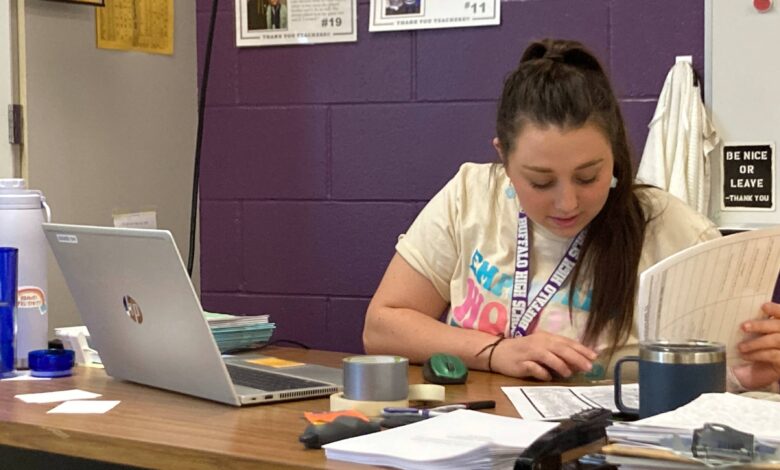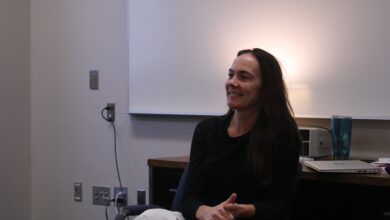
English teacher Sydney Driver spends her nights staring at her computer and grading 15 page essays for her college prep writing class. An assignment that takes an hour for her students to complete takes her hours to grade, and grading takes a hold of her home life. Her time is limited, but she does as much as she can with what time is given.
“[In] a college prep writing class, I have some papers that are 12 to 15 pages long,” Driver shared. “That takes me a really long time [to grade], especially their first draft because I usually annotate those and try to give them suggestions and give them feedback. I’d absolutely love more time, but we don’t have a lot of time. I think everyone just tries to get as much done as they can, and to the best of their ability.”
Giving feedback and helping students reach their full potential takes time. Teachers put in hours of their home lives to work without extra pay.
“I know that the culture of school changed a little bit with COVID,” said Driver. “It was so easy to be online and teachers were asked to just say, ‘Here, try this out. Do this and get as much done as you can, because we’re going through a pandemic and mental health is more important than getting a worksheet done,’ but I think now it’s kind of weird. We’re in a weird bubble, a little like a pandemic bubble. Both lack of discipline or lack of school experience [affect school work], and then other things are going on too.”
When surveyed, Driver’s third block class concluded that out of 21 students, 38.1% have a harder home life than they let on. When taking all of this into consideration, Driver tries to give minimal homework, if any. Her policy includes allowing regularly scheduled work days for her students, and giving work time when needed. She tries to maintain a disciplined work space while responding to her students’ requests.
REACH teacher Kathryn West said, “We don’t want kids to fail. It is a struggle to not let them fail, and yet, [still] trying to instill that discipline and work ethic.”
After school, students’ lives take a shift, and so do their priorities. For some students, home life may include becoming a primary caretaker for a relative, or becoming a major source of income for their household. Students who partake in afterschool activities may also find it harder to complete the assigned homework for the night, which becomes a stressor in their lives. When assigning homework, teachers try to take into consideration the usefulness and the relevance of the content which is being assigned.
Physical Education teacher Austin Youngmark is currently enrolled in college courses and tries to understand the struggles that his students go through. Like Driver, his policy includes allowing work time and assigning small amounts of homework. He encourages his students to advocate for themselves and their needs and tries to accommodate them as best as he can.
“[I say to myself,} ‘It’s crunch time, I gotta finish this assignment,’ but I’m thinking in my head ‘this assignment is so stupid, it’s just a waste of my time,’” said Youngmark. “But some of the assignments are very useful, so it’s hard for teachers to pick and choose what to assign and what not to.”
“You know, in a sport, it’s really no good to not go to practices and then expect to play in the game,” said Math teacher David Kilgore. “You know, a test is like the game. The homework is like practice. It’s where you get good.”
Kilgore values the importance of practice and requires all homework to be done prior to retakes. He believes his policy is essential in building and maintaining the fundamentals of his geometry course. However, the benefits of homework policies have been disrupted by the mental strain that teachers and students are currently facing. With the changes in educational culture within a pandemic, teachers must now pay closer attention to their own health and that of their students.
When looking at education, an often unrepresented side is that of the teacher. Many forget that they too have lives which become can complicated. How can they have compassion for themselves when there is so much to be done in such little time?
“I’m a human being. This is my job. Sometimes you have people forget that, that teachers are more than just the person in the front of the classroom,” said Kilgore. “We have lives. We have families”
The world is changing, and time is valuable. Reaching students is now harder than ever when their worlds revolve around so many things.
Compassion. Such a simple word, yet so hard to give. To ourselves, to others, to today’s youth, and even more to those who influence the education of the next generation.




